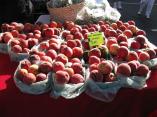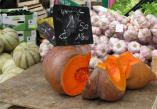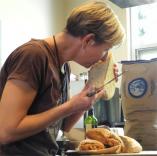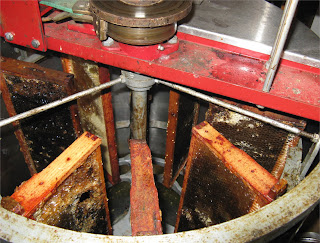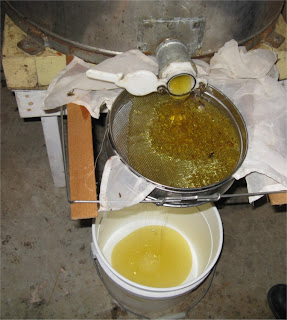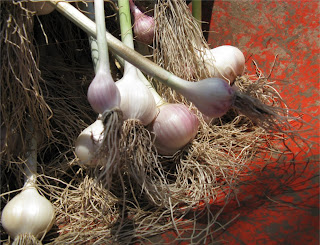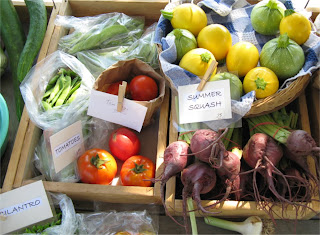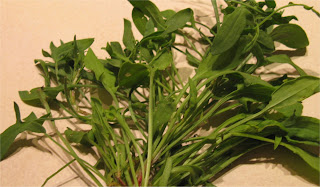Last Monday a group of us went to Larry and Marilyn’s for an extracting party. So absorbed was I in my task of finding cool comfortable clothes to last me a day in a warm garage I forgot to remember who else might be there…
but luckily was able to adapt my wardrobe to suit the conditions and escaped without a sting, although not everyone was so lucky. The bees were a bit dopey and curious and kept a close eye on us and the honey supers, and did a bit of the fine cleaning.
First task was to cut the cappings on the honey. There were several tools at our disposal. Top of the line was the capping knife,
which melts the tops off in one fell swoop, with relative speed (depending on who was operating it)…
and then there’s this more modest version…
and finally the capping comb, which is useful and necessary for finishing work as well. They must all be used carefully as you don’t want to damage the comb and make more work for the bees when you return the frames to the hive.
Then the frames, dripping honey, are positioned in the extractor, either a larger-capacity mechanical one
or a hand-cranked model that can do two frames at a time.
After a while it starts to flow…
and flow.
And then, when you have uncapped as many frames as you can,
you can down tools (the cappings are melted down for the beeswax)
and go for lunch. If you are not too full from sampling fingerfuls of honey.




